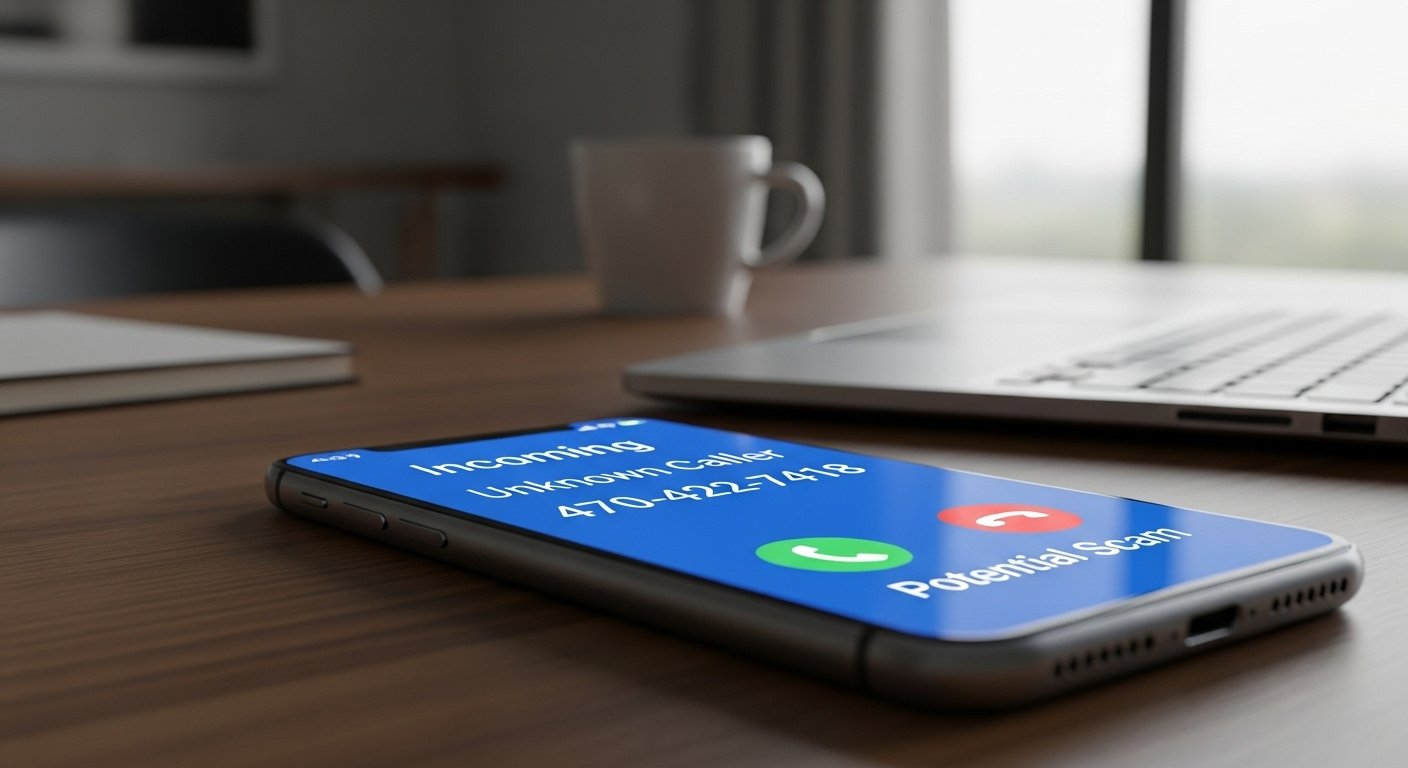Have you recently received a call from 470-422-7418 and wondered who it might be? You’re not alone. Thousands of people get calls from unknown numbers every day — some are harmless, while others can be scams or spam attempts.
In today’s world, it’s smart to be cautious before picking up a call from a number you don’t recognize. Let’s take a closer look at 4704227418, what people have reported about it, and how you can protect yourself from unwanted or suspicious calls.
Understanding Unknown Phone Numbers
When you get a call from an unknown number, your first instinct might be curiosity — Who could this be? But it’s always better to stay alert. Many scammers now use local or personal-looking numbers to trick people into answering.
The number 4704227418 appears to be a U.S.-based number, most likely registered in Georgia (area code 470). While some users have reported it as a legitimate call, others mention it being linked to telemarketing or scam attempts.
So how do you tell the difference?
Possible Reasons You Might Get a Call from 4704227418
There are several legitimate and illegitimate reasons this number could be calling you. Let’s go through the most common ones.
1. Telemarketing or Promotional Calls
Many businesses use automated systems to promote services or products. If you recently filled out a form online, signed up for a free trial, or requested quotes for insurance, roofing, or similar services — that could be where your number was shared.
2. Debt Collection or Service Verification
Sometimes, collection agencies or utility companies reach out from numbers that don’t appear official. They may call to verify your identity or remind you of pending payments. Always ask for identification or written proof before giving out any information.
3. Scam or Phishing Attempts
Unfortunately, scam calls are extremely common. Fraudsters often pose as bank representatives, government officers, or tech support agents. Their goal? To make you share personal or financial details.
If 4704227418 asks for sensitive information like bank account numbers, passwords, or verification codes — it’s almost certainly a scam.
4. Wrong Number or Mistaken Identity
Not all unknown calls are dangerous. Sometimes, it’s just a simple mistake — maybe the caller dialed the wrong number or was looking for someone else.
How to Check If 4704227418 Is a Legitimate Caller
Before jumping to conclusions, there are a few easy ways to check whether a number is trustworthy or not.
1. Use a Reverse Phone Lookup
You can use a reliable reverse lookup service to find out who owns the number. Many websites provide user feedback, helping you see if others have reported it as spam or legitimate.
2. Check Online Forums or Review Sites
Many people post about suspicious calls on community sites and phone complaint boards. If multiple users report the same number with similar experiences, that’s a red flag.
3. Let It Go to Voicemail
If the call is important, the person or company will usually leave a voicemail. Listen carefully — real businesses usually identify themselves and give clear details, while scammers tend to sound vague or rushed.
4. Never Call Back Immediately
Scammers often rely on curiosity. They hope you’ll call back and confirm your number is active. If you’re unsure, research the number first instead of returning the call.
What to Do If 4704227418 Keeps Calling You
If you’re receiving frequent or unwanted calls from this number, don’t worry — you can take control.
1. Block the Number
On most smartphones, you can easily block the number from your call log. This prevents future calls or messages from reaching you.
2. Report It
You can report unwanted or scam calls to organizations like the Federal Trade Commission (FTC) in the U.S. or your local telecommunications authority. This helps track and shut down fraudulent numbers.
3. Use Spam Detection Apps
Apps like Truecaller, Hiya, or your phone’s built-in spam filter can automatically identify and block known scam numbers.
4. Stay Calm and Don’t Engage
If you accidentally answer and the caller starts asking for personal information or pressures you, hang up immediately. Don’t share any codes, passwords, or financial data over the phone.
Why Scammers Use Local-Looking Numbers Like 4704227418
You might notice that the number looks local — this is intentional. Scammers often use a trick called “spoofing”, where they disguise their real number to look like it’s from your area.
They do this to build trust and increase the chance you’ll pick up. Some even pretend to represent popular companies, delivery services, or banks.
That’s why even if a number looks local, you should still verify it before trusting the caller.
How to Protect Yourself from Scam Calls
Here are some simple tips to help you stay safe from calls like the one from 4704227418:
-
Don’t share personal info unless you’re 100% sure who’s calling.
-
Avoid clicking on links sent through suspicious text messages.
-
Keep your phone’s spam protection features turned on.
-
Register your number on a national “Do Not Call” list if available.
-
Educate family members, especially older adults, about common scam tactics.
Remember, legitimate organizations won’t threaten you, rush you, or ask for immediate payment over the phone.
What People Have Reported About 4704227418
Based on online discussions, people have mixed experiences with this number. Some report telemarketing offers related to insurance or home services, while others mention automated calls that hang up when answered.
While not every call from this number is confirmed as a scam, the safest approach is to treat it with caution unless you’re expecting a call from that region or company.
Conclusion: Stay Alert, Stay Safe
Getting a call from 4704227418 can be confusing, especially if you weren’t expecting it. While some calls may be harmless, others could be attempts to scam or collect your data.
The best thing you can do is stay aware, research the number before engaging, and never share personal information unless you’re certain of who’s calling.
With a few simple precautions, you can easily protect yourself from unwanted or risky phone calls.
FAQs About 4704227418
1. Is 4704227418 a scam number?
It might be. Many users report it as a telemarketing or suspicious call. Always verify before sharing any information.
2. What should I do if I get repeated calls from this number?
Block the number and report it to your phone carrier or local authority. You can also use spam-blocking apps for added protection.
3. Can scammers use real business names when calling from 4704227418?
Yes, scammers often pretend to be from banks, government offices, or delivery services to gain your trust. Always confirm directly with the company before responding.

